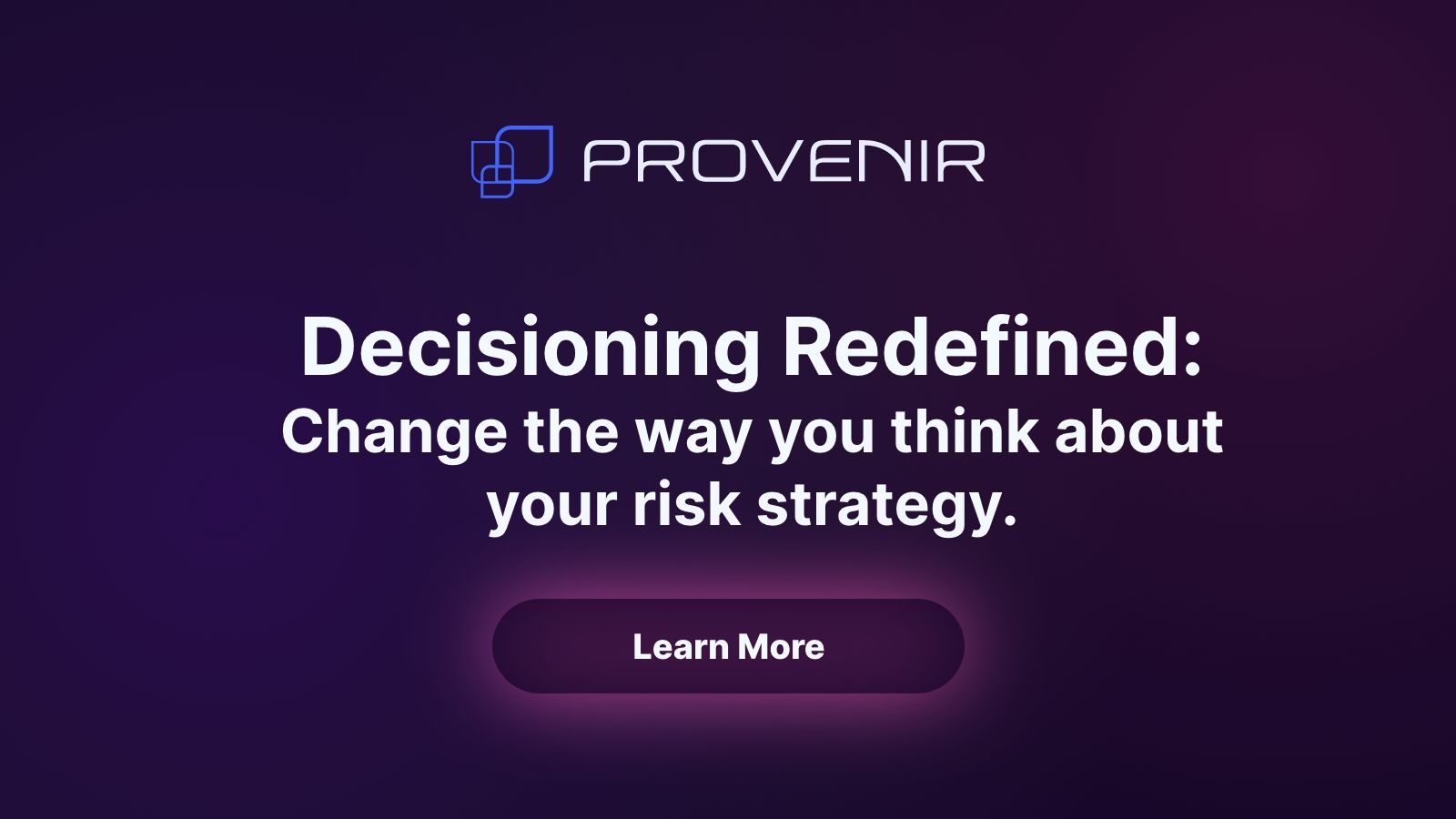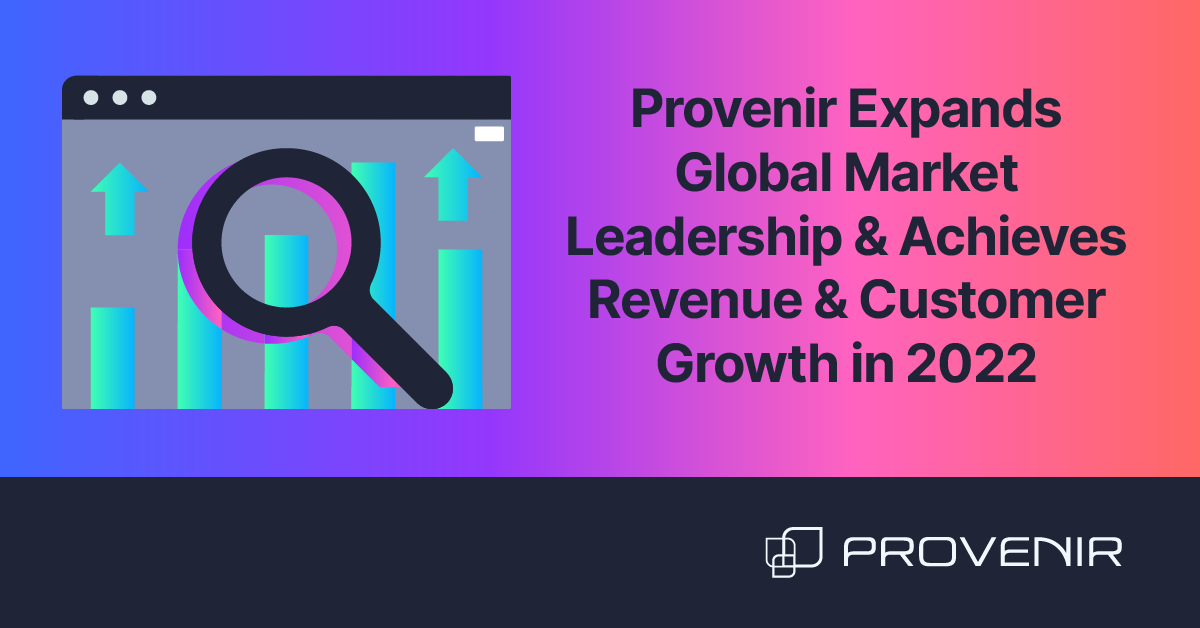The Ultimate Guide
to Decision Engines
What is a decision engine and how does it help your business processes?
Decision engines, sometimes referred to as decision trees, are software platforms that automate business rules or business decisions – helping you streamline business processes that require decision-making without having to think about it. A decision engine automates these business decisions based on your business needs and the particular criteria the platform’s owner sets out, saving you from manual work and centralizing the decision-making process.
What does a decision engine need to run? Besides the set of rules (logic), otherwise known as the decisioning workflow, decision engines need data. Lots and lots of data. By accessing and integrating data from multiple sources and applying these ‘rules’ according to your criteria, voila – you can automate decision-making. In the finance world in particular, decision engines are often used to help you make decisions on who to lend to and helps determine which sort of products you can offer your customers.
Automated decision engines can also enable personalized pricing and offers (i.e. finance terms and interest rates), all of which are customizable to your unique needs. Some popular examples in the world of fintech/financial services include: consumer lending, loan origination, credit card approvals, auto financing, point of sale lending like buy now, pay later (BNPL), lending to SMEs, insurance policy approvals, upsell/cross-sell offers, champion/challenger strategies, audits, collections and more.
How does a decision engine help inform business decisions?
Decision engines can help inform various types of business decisions – on everything from basic day-to-day operations to more high-level, strategic business decisions.
- Strategic Decisions: Strategic decisions are top-level, and tend to be more complex, affecting a much larger portion of the organization and often applicable for a longer term (i.e. changing cost structures or planning for longer-term organizational growth). Decision engines and automated decisioning processes can expedite and streamline various processes, improve efficiency, and allow you to make smarter decisions overall. In the case of financial services, this could mean a shift in deciding who you can lend to in order to expand your overall customer base and plan for growth. Keep in mind that more complex decision execution typically requires a large amount of data, provided from a variety of data sources. Utilizing decision engines and automated decisioning processes can help an organization access, analyze, and action a large variety of data, enabling smarter decision-making.
- Tactical Decisions: Tactical decisions are much more focused on business processes and tend to be shorter-term and less complex. Examples include launching new products, changing product pricing, managing inventory control, and supply chain and logistics. With decision engines, you can more easily analyze performance data and help determine new pricing strategies for your financial services products or look strategically at which demographic or region to target next.
- Operational Decisions: Focused on day-to-day operations of a business, operational decisions are much smaller in scale. They tend to be related to overall daily production and are usually executed in alignment with the overall strategic vision of an organization. In financial services, decision engines can improve efficiency and help automate or streamline varying day-to-day decisions, including loan approvals, interest rate offers, guidance on collections, merchant onboarding, pricing optimization, compliance processes, identity verification, fraud prevention and more.
Decision Engine Framework
So how does a decision engine actually work? And how do decision engines function in a business? While it’s up to each individual organization (and all of the individual business rules within) how they want their business decisions to be executed, there are some basic steps that remain true across the board.
- Set Desired Outcomes: Look at what your goals are. What are the specific business rules that you need your decision engine or workflows to execute on?
- Determine Decision Criteria: What are the standards or requirements to which you are making your evaluations or decisions? For example, in the case of many credit applications, particular criteria often include income, job status, age, marital status, debt ratio, etc.
- Organize Data Sources: To process these business decisions based on your desired outcomes and your determined criteria, what sort of data sources do you need? Do you need traditional credit bureau data, third-party sources, alternative data like rental info, social media presence and web data, etc.?
- Create Decisioning Workflows: What are the necessary steps in your decisioning process? Use the configuration tools within your decision engine to lay out your workflows and business rules and enable automated decisions.
- Test and Iterate: Create, test and deploy your modelling scorecards and decisioning process, and look at what happens when a typical customer is put into your system. For example, if a customer applies for a credit card, their information is put into the decision engine, which then pulls in necessary data (identity verification, KYC, income verification, fraud), and rejects or approves based on the initial criteria determined. Is something missing? Can your business process be smoother? Iterate!
- Determine Next Steps: Where is your threshold for complex applications? Which applications need manual intervention? Straight-through processing enables instant decisions for more simple credit and lending requests, while a rules-driven decisioning process helps to identify and re-route exceptions that require more manual intervention.
- Monitor and Optimize: Is your decision engine offering real business value? Keep tabs on your decisioning performance by using the information your decision engine gives you. Identify opportunities for further enhancement of your decisioning process and tools and enable more efficient decisioning – and business growth.
How does a decision engine function in a business?
As we’ve shown, there are a large variety of ways that decision engines can help inform business processes. But how exactly does it do that? In the case of financial services, think of all the manual decisions that require human intervention. If an individual needs a car loan, for example, how does a lender determine if that individual is creditworthy or not? And if they are, what interest rate or repayment terms should they be offered? Having an automated decision engine can streamline the application, approval, and funding process to ensure an efficient, superior customer experience.
In the auto financing example, applications can move from manual, paper-heavy forms, and hours of sitting in a dealership to simplified, online applications. An individual can easily fill out an application and provide ID, which then allows a decision engine to move that person quickly and easily through the decisioning workflow along a series of pre-determined steps, according to the initial criteria.
In this case, that criteria could start with analyzing data for identity verification (is this person really who they say they are? How old are they? Do they have a valid driver’s license?), then move through to various factors that determine creditworthiness. Does this person have an income that is above our threshold? What is their credit score? How much debt does this person already have, and what is their debt-to-income ratio? Do they have previous loan defaults on their record?
As the decision engine automatically accesses and analyzes all the data required according to the business rules, it moves that application through the workflow based on the answers. Driver’s license? Check, on to the next step! Old enough to own a car? You betcha. Have a job? Yep, move along! But then comes a doozy of a credit score and a record of numerous loans having gone to collections. The buck stops here and the decision engine (as per the initial ‘instructions’ when setting out the original workflow) stops the application and determines that this individual is NOT a risk this lender wants to take.
Of course, not all situations are as black and white as that example, but the beauty of automating business processes with a decision engine is that you can streamline and improve efficiency for many situations and types of applicants, while focusing that most precious resource, humans, on the more complex cases that require manual intervention.
Data, Data, and More Data
Despite all the wonderful ways that business processes can be improved using decision strategies, there can be no automating decision execution without extensive data and data aggregation. Data, preferably varied and from a wide range of data sources (including historical data), is critical to the decision-making process.
All financial services organizations use data to make informed decisions across the customer lifecycle – but having to manually access and integrate data sources is nothing short of a nightmare. Data consumption has evolved, right alongside the decision engines that data feeds into. It’s impossible to make accurate decisions based on business needs without the right data that aligns with the particular criteria set out. Think back to the examples previously discussed – where do you get information on loan payments, credit policies, credit scores, income to debt ratio, age verification, etc.? It’s all about your customer data sources.
These days, more and more lenders are increasingly looking to a wider range of data sources, including alternative data like rental payments, social media interactions, website info, travel data and more, to ensure:
- A more accurate view of identity verification
- A more holistic view of risk and creditworthiness
- Better fraud prevention
All this data must be accessed, analyzed, and actioned appropriately to help ensure more accurate, automated decisions that provide value to a business. As The Financial Brand said, “Data, by itself, is not a valuable asset. It’s what you do with it that counts.” Having a variety of data available on-demand is essential for enhancing your automated decisioning. Third-party data providers, connected through a centralized platform or marketplace with a single API, can make this data consumption effortless, giving you the ability to access and integrate numerous data sources in minutes. Use that data to test your decisioning workflows, and then iterate and adapt with ease.
AI-Powered Decisioning
The use of artificial intelligence and machine learning is growing. AI in financial services is seen as a $450 billion opportunity. But how can you use AI most effectively in your decision engines? Using AI/ML to power your decisioning process enables:
- Improved decisioning accuracy
- Superior fraud detection
- Enriched customer relationships
- Improved customer satisfaction
- Expanded customer base
- Optimized pricing
- Revenue growth
McKinsey pointed out that “The continuing advances in big data, digital, and analytics are creating fresh opportunities for banks to improve the credit-decisioning models that underpin their lending processes… the banks (and fintech companies) that have put new models in place have already increased revenue, reduced credit-loss rates, and made significant efficiency gains thanks to more precise and automated decisioning.”
It may seem daunting to try to implement AI into your decisioning processes, but you don’t necessarily need data scientists on your team to make AI impactful. With a technology platform that incorporates both data sources and advanced machine learning into your decision engine, you can make use of advanced decisioning – and get all those benefits listed above.
AI allows you to do things that may be challenging for traditional decision engines, including enabling more approvals for unbanked consumers, adapting to rapidly changing market trends and consumer demands without sacrificing the customer experience, and finding relationships in your data (see? Data is king!) that may be otherwise unseeable. If you do happen to be lucky enough to have data scientists in-house and need to figure out a way to utilize all their expertise in your decision engine or business applications, look for a technology partner that can easily migrate existing models into a user-friendly platform.
What’s the benefit?
While we’re talking about data integrations, automated workflows, data scientists, machine learning… why go to all this trouble? There is immense value in using decision engines in financial services instead of manually trying to make complex decisions around your business processes. Some of the benefits include:
- Boosted Performance: make decisions faster and more effectively, enabling optimized business performance
- Increased Profits: lend to more customers, without increasing your risk, allowing for better profit margins
- Improved Efficiency: save time and resources, with fewer human interventions needed and the ability to make decisions faster
- Flexibility: change your decision criteria without having to re-do your entire workflow
- Scalability: easily add more data integrations and new criteria or decision parameters to your workflows as your business grows or the needs of your consumers/the market changes
- Focused Resources: save your underwriters’ attention and manual intervention for more complex cases
- Consistency: ensure consistency and stability in your decision-making processes, enabling enhanced customer relationships and reliability in business performance
- Transparency: get full visibility into what your decision engine is doing and measure performance so you can easily optimize
- Capture information: manual underwriting requires manual information capture – with an automated decision engine you can easily maintain information on your customers, your decisions, and your overall performance, which you can then feed back into your decision engine for further optimization
Also read: The Essential Guide to Credit Underwriting
Customer experience is more critical than ever. In an age of having everything available on demand (tv shows, rides, food delivery, workouts), your consumers expect speed. On top of that, they value customization. We want Netflix to know exactly what kind of show we’re up for next or appreciate when our Facebook feed is filled with ads that resonate. According to PwC, 80% of consumers rank speed as a key buying factor, and Salesforce says that 76% of consumers expect customized offers. Who has time for that if you’re busy making all your business decisions manually?
The Future of Decision Engines
What does the future hold for decision engines? From our perspective, the prospects are bright. Did you know that Forrester recently added Digital Decisioning Platforms to their Wave report? According to Forrester, Digital Decisioning Platforms (DDP) are “an evolution of expert systems, knowledge-based systems, business rules management systems, and decision management systems.” It’s a mouthful, but it’s clear the trajectory is positive when you automate your business decisions. And with the increased acceptance of artificial intelligence and machine learning, the ways in which we can automate decisions will only get more exciting (and profitable).
For Further Reading:
Are you ready to discover how an AI-Powered Decisioning Platform can help your decision-making process?
Get the eBook
LATEST BLOGS






